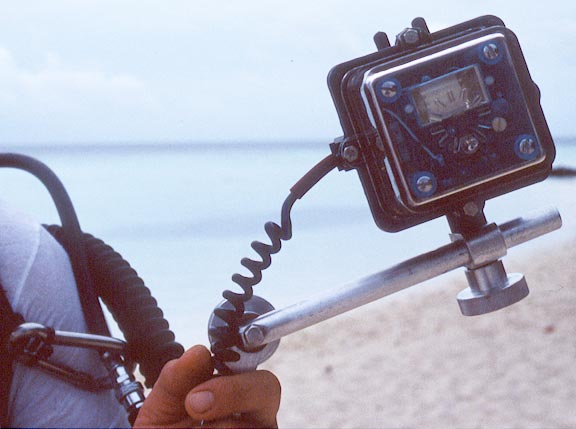 |
Depth Compensating Flexible Camera Housing
by David KnightIn 1989 I built a depth-compensated flexible underwater camera housing. This was based on a ewa-marine housing, with an automatic air inlet valve connected to an auxiliary life-jacket feed on my SCUBA regulator (preventing the housing from collapsing on descent), and a two-stage air outlet valve (preventing the housing from over-inflating on ascent). This apparatus was originally intended as a prototype for a possible commercial product, but it required rather more skill to operate than a conventional pressure-resistant housing and was deemed unlikely to be commercially successful.
Still, I took a great many photographs with it and rather liked using it. Some pictures of me with it are given below. The camera is a Canon AE1 with a Sigma 50mm 1:1 macro lens. The flash is a simple manual unit built by me and connected to the housing using a Belling Lee Buccaneer IP68 connector (these seem to work perfectly well at 40 m underwater).

DWK with prototype housing, Baros, Maldives, Aug. 1990 (r90h01-07)

Side view. (r90h01-08)

Automatic air inlet valve (r90h01-10)

Flash unit built into one of Tony Birchley's injection moulded housings (r90h01-09)

Operating the camera through the housing
glove (r90h01-12). Unfortunately, the flash arm doesn't support
the weight of the flash unit in air, but 1" ball-joint arms were not so
common in those days.
 DWK
DWK